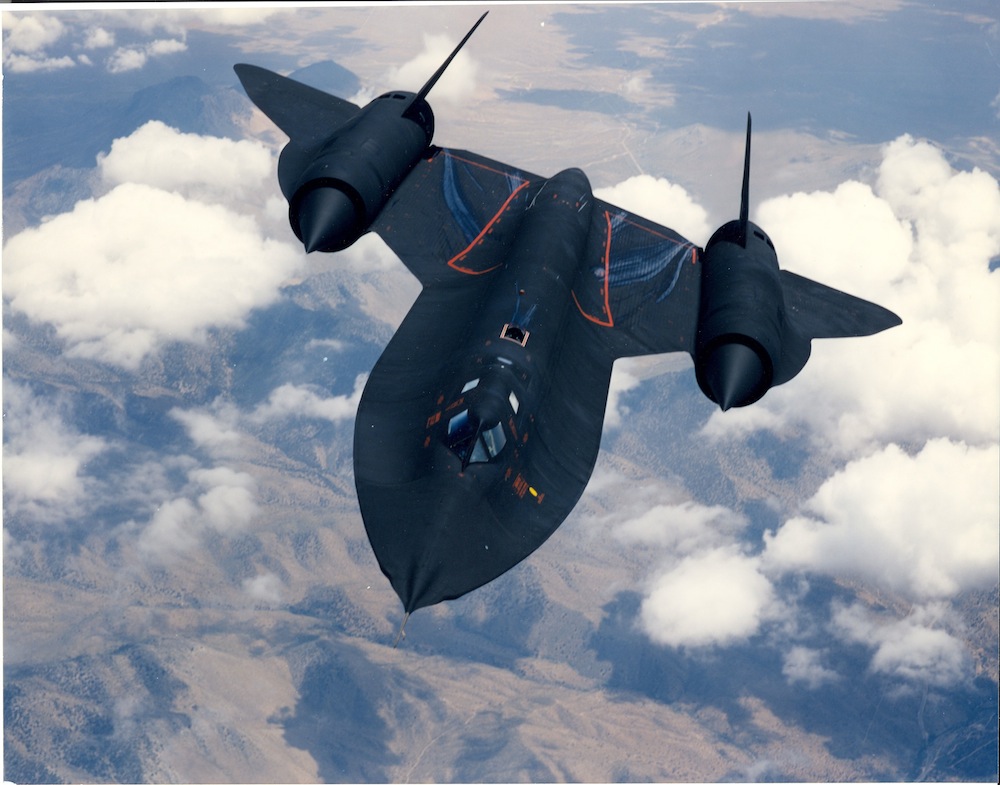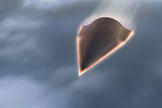Affordable Hypersonic Jets Could Be High-Flying Reality by 2023

Hypersonic aircraft and weapons that can fly more than five times the speed of sound may seem like a futuristic fantasy, but defense giant Lockheed Martin says it is committed to making these ultrafast innovations a reality.
In fact, Lockheed Martin is doubling down on hypersonic aerospace technologies, Lockheed officials said recently at the company's Media Day.
"Lockheed Martin continues to invest in propulsion technologies and advanced materials needed for hypersonic speeds," Marillyn A. Hewson, Lockheed Martin president and CEO, said in a statement on March 15. "We're now producing a controllable, low-drag, aerodynamic configuration capable of stable operation from takeoff, to subsonic, transonic, supersonic and hypersonic to Mach 6." [Supersonic! The 11 Fastest Military Airplanes]
Hypersonic speed is defined as speed above Mach 5 (five times the speed of sound — about 3,800 mph, or 6,100 km/h). For comparison, a 747 airliner travels at about 550 mph (885 km/h). In 2015, Lockheed Martin said its engineers were designing hypersonic vehicles that could move at 4 miles per second, or 14,400 mph. At such hypersonic speeds, an aircraft could fly across the Pacific Ocean in 1 to 2 hours.
Although they're not yet in use beyond testing, hypersonic aerospace technologies are not new. "There was a large push toward it in the 1950s, all the way up to the manned moon missions," said Thomas Corke, the Clark Chair Professor in Engineering at the University of Notre Dame in Indiana.
Many vehicles, particularly objects falling back to Earth after launching into space, have reached hypersonic speeds. The first human-made object to exceed Mach 5 was a V-2 rocket launched by the U.S. Army on Feb. 24, 1949.
Though hypersonic jets have been built, they are expensive, and over the years, interest (and funds) for the technology has waxed and waned. Now, Lockheed suggests they are closer to building a hypersonic craft at an affordable price.
Get the world’s most fascinating discoveries delivered straight to your inbox.
Hypersonic history
The first hypersonic aircraft was developed in the late 1950s as part of the X-15 hypersonic research program, a project jointly conducted by NASA, the U.S. Air Force and Navy, and North American Aviation Inc. The 50-foot-long (15 meters), rocket-powered, piloted aircraft was launched from a B-52 plane at 45,000 feet (almost 14,000 m), and reached speeds exceeding 500 mph (805 km/h). Over the span of nearly a decade and 199 flights, the X-15 set unofficial world speed and altitude records, traveling 4,520 mph (Mach 6.7 or 7,274 km/h) at 354,200 feet (107,960 m). But progress on hypersonics slowed once ballistic re-entry (re-entry slowed by atmospheric drag) was chosen over an aerodynamic re-entry for early spaceflights, Corke told Live Science. [Image Gallery: Breaking the Sound Barrier]
Now, with rising concerns about national defense, interest in hypersonics has been renewed in recent years. "The [saying] that is used quite a bit is: Hypersonics is the new stealth," Corke said. Newer hypersonic aircraft include the U.S. military's experimental Falcon Hypersonic Technology Vehicle 2 (HTV-2) and Lockheed Martin's proposed SR-72 hypersonic spy plane.
The unmanned Falcon HTV-2 reached a remarkable Mach 20 (about 13,000 mph, or 20,921km/h) in its second test flight in 2011. But, both tests of this rocket-launched, arrow-shaped glider terminated prematurely.
The SR-72 has been billed as the successor to the SR-71 Blackbird, which flew from New York to London in less than 2 hours in 1974. The reconnaissance aircraft reached speeds in excess of Mach 3 and set speed records that still stand today, according to Lockheed Martin. Skunk Works, the same division of Lockheed Martin that created the SR-71, has said the SR-72 would fly at twice the speed of its predecessor.
By modifying an off-the-shelf turbine and combining it with a ramjet (a type of jet engine with no moving parts that sucks in air for combustion), the SR-72 could be a fairly inexpensive reality by 2030, Skunk Works engineers said in an explanation of the aircraft from 2013.
Corke added that this type of combined cycle propulsion is one possibility for hypersonics, which use ramjet engines to fly at hypersonic speeds but require a different kind of propulsion to get them to Mach 5. (Hence, other hypersonic aircraft are using rockets.) In her remarks at Lockheed Martin's Media Day, Hewson estimated that a demonstration hypersonic aircraft the size of an F-22 could be developed, built and flown for less than $1 billion.
Speedy weapons
In addition to hypersonic aircraft, Lockheed Martin is developing hypersonic weapons, including what they are calling the "Hypersonic Air-Breathing Weapon Concept." Technically, hypersonic weaponry already exists: The Navy's electromagnetic railgun shoots a projectile at Mach 5. A maneuverable hypersonic weapon has yet to be created, though back in 2013, Lockheed Martin predicted it might be able to demonstrate such missile technology by 2018.
"I would say that there are drawings on the books to develop hypersonic weapons that could be available by 2018, although I don't think [that's likely]," Corke said. "I think that timeline is out there a few more years." [Photos: Hypersonic Jet Could Fly 10 Times the Speed of Sound]
Defense was a central theme of Hewson's remarks at Media Day, particularly regarding the rise of violent extremists and militant groups, such as the Islamic State group (ISIS) and Boko Haram. High-speed weapons are promising developments in national security because they have the potential to strike quickly and stealthily, escaping harm by flying at high altitudes.
Hypersonic challenges
Altitude is among the chief technical challenges Lockheed Martin cites in the creation of hypersonic vehicles. Flying high can provide cover; it's also a way for the vehicle to avoid the higher pressures present at lower altitudes, which could cause it to burn up. The trade-off is that the thin air makes steering difficult, according to Lockheed Martin.
Some hypersonic aircraft are manned vehicles, but the thin air at high altitudes combined with the immense speed means a pilot cannot react fast enough to potential issues. This means manned hypersonic vehicles have to be controlled by a computerized system that balances the craft while the pilot directs the larger maneuvers.
Extreme temperatures are another crucial consideration for travel at hypersonic speeds. The Falcon HTV-2, for example, recorded surface temperatures of 3,500 degrees Fahrenheit (1,927degrees Celsius) during its fateful test flight. Friction at these speeds can melt steel — the more turbulent the air is, the higher the surface temperatures.
"Right now, we have no confidence in being able to predict where and if the airflow over a hypersonic vehicle is turbulent," Corke said.
To study and address these problems associated with hypersonics, researchers need to use computational simulations and ground experiments. The University of Notre Dame is building the largest quiet hypersonic research wind tunnels, a Mach 6 tunnel and a Mach 10 tunnel. Engineers working on hypersonics are making use of newly developed heat-resistant materials, while giving also close consideration to the vehicles' overall form.
Lockheed Martin has said that hypersonic aircraft won't be part of consumer air travel any time soon, since the focus is more related to current defense needs.
Hewson did, however, reiterate a more fantastic potential future for hypersonic crafts that aerospace companies have dangled in front of us for years — that hypersonic developments could be an eventual path to quick, affordable passenger flights to space.
"It's a fascinating field," Corke said. "It's in this area that's in between aircraft and spacecraft. … There's tremendous complexities to it that make it a good topic to study for 50 years."
Follow us @livescience, Facebook & Google+. Original article on Live Science.
 Live Science Plus
Live Science Plus








